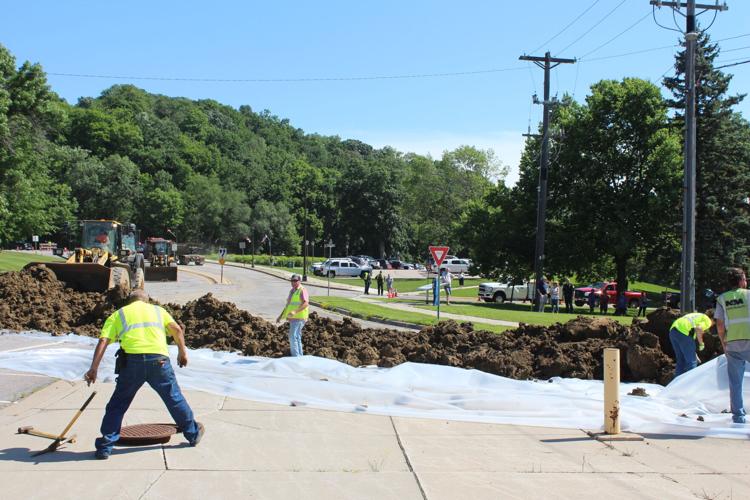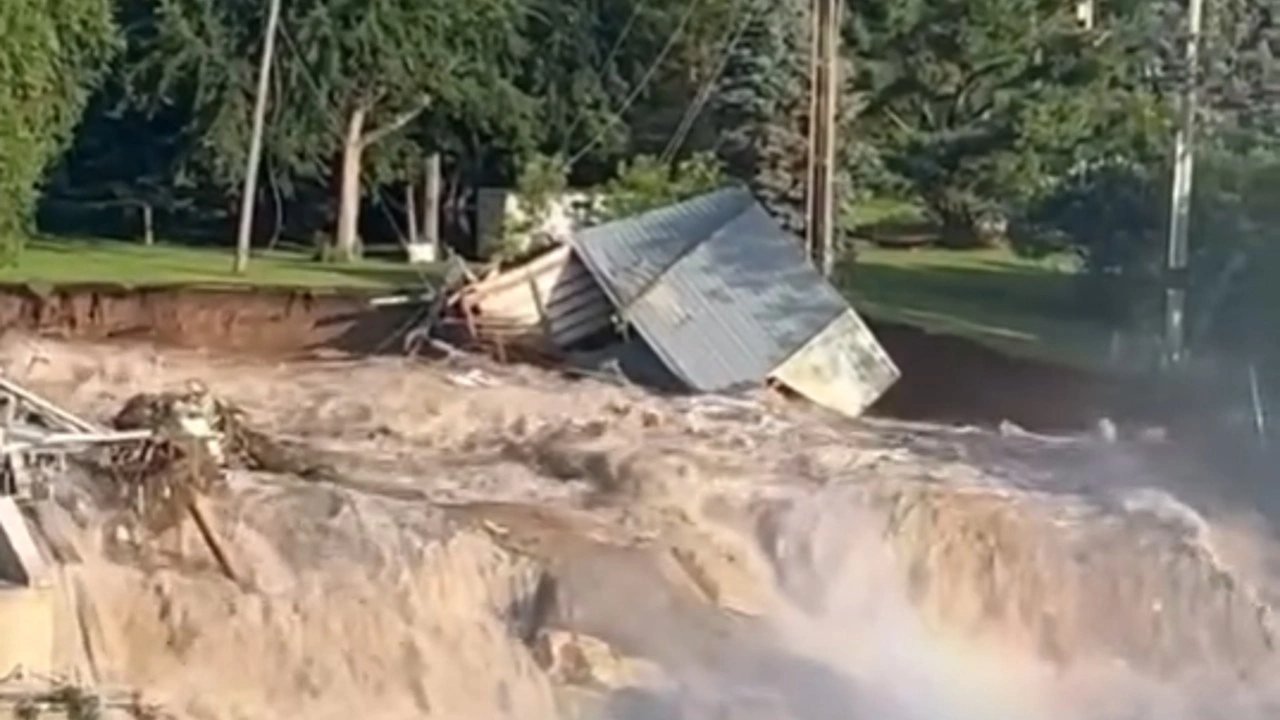Historical Overview: Mankato Dam Failure

Mankato dam failure – The Mankato Dam, a 20-foot-high, 250-foot-long structure built in 1856 to power a flour mill, failed catastrophically on September 9, 1868, sending a wall of water crashing through the town of Mankato, Minnesota. The disaster claimed the lives of 38 people and destroyed over 200 buildings.
The Mankato Dam failure, a tragic event in 1938, devastated the Blue Earth County region. The dam’s collapse sent a torrent of water crashing through the city of Mankato, causing widespread destruction and loss of life. The aftermath of the disaster left an indelible mark on the community, shaping its history and resilience.
Causes
The dam failure was caused by a combination of factors, including heavy rainfall, inadequate spillway capacity, and poor construction. The rainfall in the days leading up to the failure had saturated the ground, increasing the pressure on the dam. The spillway, designed to allow excess water to flow over the top of the dam, was too small to handle the volume of water. Additionally, the dam was not built on a solid foundation, which allowed it to be undermined by the rushing water.
The Mankato Dam failure, a tragic event in Minnesota’s history, devastated the Blue Earth County region. The dam’s collapse unleashed a torrent of water, submerging homes, businesses, and farms. The aftermath of the disaster left an enduring scar on the community, forever etched in the annals of local history.
Consequences, Mankato dam failure
The dam failure had a devastating impact on the town of Mankato. The floodwaters destroyed homes, businesses, and infrastructure. The town’s economy was crippled, and many residents were left homeless. The disaster also had a significant environmental impact, as the floodwaters washed away topsoil and polluted the Minnesota River.
The Mankato Dam failure of 1991 stands as a haunting reminder of the destructive force of unchecked water. Yet, in the annals of dam disasters, another harrowing incident echoes its resonance – the Rapidan Dam break of 1877. Both events bear witness to the devastating consequences of engineering miscalculations, serving as stark lessons in the critical importance of water management and dam safety.
Legacy
The Mankato Dam failure is a reminder of the importance of dam safety. In the years since the disaster, dam design and construction standards have been greatly improved. Today, dams are built with multiple spillways and are constructed on solid foundations. As a result, dam failures are rare, and when they do occur, they are typically less catastrophic than the Mankato Dam failure.
Engineering Analysis

The Mankato Dam, an earthen embankment structure, was designed with a central impervious core of compacted clay, flanked by pervious shoulders of sand and gravel. The dam’s height reached 56 feet (17 meters), and its crest stretched 2,050 feet (625 meters) across the Minnesota River.
Structural Weaknesses
The Mankato Dam exhibited several structural weaknesses that ultimately contributed to its failure. The most significant flaw lay in the design of the impervious core, which lacked a proper drainage system. As a result, water seepage accumulated within the core, saturating it and reducing its stability. Additionally, the dam’s foundation was not adequately prepared, and weak spots in the underlying rock allowed water to infiltrate and erode the structure.
Lessons Learned
The catastrophic failure of the Mankato Dam served as a sobering reminder of the importance of sound engineering principles in dam design and construction. The lessons learned from this tragedy have profoundly influenced modern dam-building practices. Today, dams are meticulously engineered with robust drainage systems to prevent water accumulation within the impervious core. Furthermore, thorough geological surveys are conducted to ensure the stability of the foundation before construction commences. These measures, implemented in response to the Mankato Dam failure, have significantly enhanced the safety and reliability of dams worldwide.
Environmental Impact

The catastrophic failure of the Mankato Dam unleashed a torrent of water that devastated the surrounding ecosystem. The loss of habitat and wildlife was immeasurable, as the floodwaters swept away trees, vegetation, and animal life. Aquatic species were particularly hard-hit, as the dam’s collapse disrupted the natural flow of the river and destroyed spawning grounds.
In the aftermath of the disaster, immediate measures were taken to mitigate the environmental impact. Wildlife rescue teams worked tirelessly to save stranded animals, while environmental engineers assessed the damage and began the process of restoring the affected ecosystem. Reforestation efforts were initiated to replenish lost vegetation, and measures were put in place to protect remaining wildlife populations.
Ongoing Restoration Efforts
The restoration of the Mankato Dam ecosystem is an ongoing process that requires long-term planning and collaboration between various stakeholders. Environmental scientists are working to restore the river’s natural flow and improve water quality. Reforestation projects continue to replenish lost vegetation and provide habitat for wildlife. Educational programs are also being implemented to raise awareness about the importance of ecosystem conservation and the lessons learned from the Mankato Dam failure.
The Mankato Dam failure, a catastrophic event in 1938, devastated the town of Mankato, Minnesota. The raging waters surged through the streets, leaving behind a trail of destruction. However, amidst the wreckage, the spirit of the community remained unbroken. The nearby town of Blue Earth, MN , extended a helping hand, providing shelter and support to the displaced residents.
The resilience of both towns in the face of adversity serves as a testament to the strength of the human spirit.
The Mankato Dam failure, a catastrophic event that sent shockwaves through Minnesota, remains etched in the collective memory of the state. In 1998, the dam’s collapse unleashed a torrent of water that ravaged downstream communities, causing extensive damage and loss of life.
As one delves into the history of dam failure in Minnesota , the Mankato Dam disaster stands as a sobering reminder of the devastating consequences that can result from structural failures.